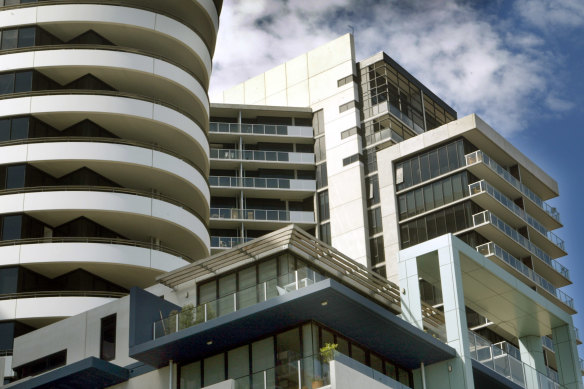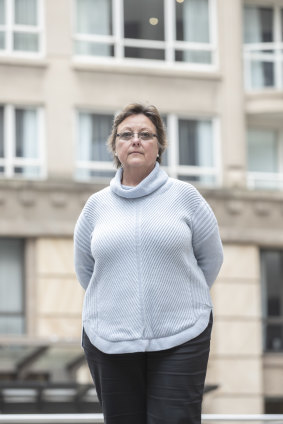Apartment owners face strata fee increases of 20 per cent as costs soar
By John Collett
Strata levies paid by apartment owners are up by 15 to 20 per cent on average over the past year as the costs of insurance, utilities and repairs and maintenance outstrip even the rapid rise in general inflation.
Apartment owners are facing an increase in strata fees on top of rises in mortgage repayments.

Apartment owners are facing an increase in strata fees by as much as 20 per cent on top of their already significant rises in mortgage repayments.Credit: Simon Schluter
Inflation is falling but was still 5.6 per cent higher in the year to May, but some key components of strata fees, such as insurance, have outpaced this rise. The costs of electricity and gas, another significant cost in levies, have risen substantially.
Without any official source of strata levies, the evidence for rising levies is anecdotal, but Karen Stiles, executive director of the Owners Corporation Network, which represents residential strata owners, says increases of 20 per cent would have been typical for apartment owners over the past 12 months.

Karen Stiles, executive director of apartment owners advocacy group Owners Corporation Network.Credit: Louie Douvis
“What we are seeing is levies rising and sometimes going up 70 per cent or more in the second year of new buildings as developers do set levies low to entice people to buy,” Stiles says.
Insurance costs are rising because of the increase in replacement values, due to higher costs of skilled labour and building materials, as well as increasing risks from natural disasters, she says.
Samantha Reece, the director of Australian Apartment Advocacy, says some buildings are playing catch-up with maintenance because they have not had enough money going into the “sinking” or capital works fund.
She has heard of strata levies increasing by as much as 40 per cent over the past year. The increases do not include where the levies have risen to help fund the rectification of defects, which can be on another level again.
Owners who are facing big increases in strata fees, including those who have paid special levies, are reluctant to go public, as they are worried about the impact on resale values.
One owner of an apartment in Sydney told this masthead that she has paid a special levy of $40,000 to help fund remedial work for construction defects on her seven-year-old building.
“We have sued the builder, who went broke, we have sued the developer and have received a percentage [of the costs],” she says.
Another, who owns an apartment in a large complex in inner Melbourne that is just over two decades old, says insurance costs started to “move dramatically about four years ago”.
His building does not have defects but had a problem with water damage which, when coupled with the general increase in insurance costs, has resulted in annual rises for cover of between 20 and 30 per cent.
A 2021 NSW report on defects found 39 per cent of all residential apartment buildings built between 2014 and 2020 in the state had serious defects.
The most commonly occurring serious defects related to waterproofing, which affects 23 per cent of surveyed buildings, followed by fire safety at 14 per cent. Just under 10 per cent of the defects were structural.
Chris Duggan, national president of the Strata Community Association, whose members include strata management companies, says there are “clearly going to be isolated examples of buildings that require significant remedial work and major upgrades”.
“However, the vast majority of unit owners have seen increases of 5 to 15 per cent over the past 12 months,” Duggan says.
The figures are those that have been reported to the association by some of its members.
“That excludes those exceptional circumstances where special levies are raised for major works and remedial works and litigation and that is where you do get scenarios where [levies] can significantly increase,” he says.
Smaller buildings tend to see bigger increases in strata fees as they are less able to absorb the higher costs of insurance and repairs and maintenance and utilities, he says.
Properties with delayed repairs and maintenance can have higher costs of insurance compared to buildings where owners have been more proactive in having those issues addressed, Duggan says.
Most owners could be doing more to mitigate rising costs, such as improving the energy efficiency of their buildings, including simple measures like fixing leaking taps, putting timers on lights and installing more efficient light fittings in common areas, he says.
- Advice given in this article is general in nature and is not intended to influence readers’ decisions about investing or financial products. They should always seek their own professional advice that takes into account their own personal circumstances before making any financial decisions.
For expert tips on how to save, invest and make the most of your money, delivered to your inbox every Sunday, sign up for our Real Money newsletter here.